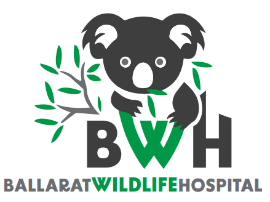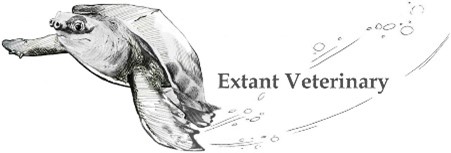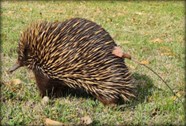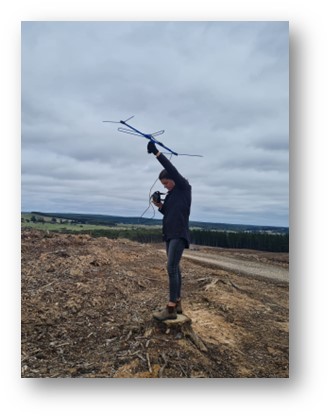Wildlife Tracking Project



Post-release monitoring of significant native animal species that have been rehabilitated by Ballarat Wildlife Hospital.
"Tracking the Future of Wildlife: Rescuing and Releasing for Tomorrow's Ecosystems"
"Join us as we monitor the post-release journeys of Koalas, Echidnas, and Birds of Prey, learning how they adapt to the challenges of climate change in Ballarat's unique environment."

1. Introduction to the Project: Why Wildlife Tracking Matters
"Protecting Our Native Wildlife Through Tracking and Research"
Climate change is altering the ecosystems that native species depend on, creating new challenges for their survival. In the Central Highlands of Victoria, rainfall is predicted to decrease, while temperatures and fire risks are expected to rise. These changes are already placing enormous stress on native animals, including iconic species like koalas, echidnas, and birds of prey.
Our wildlife tracking project, in partnership with Ballarat Wildlife Hospital, aims to study how rescued and rehabilitated animals navigate these shifting environments. By tracking their movements after release, we can understand how they adjust to the landscapes around Ballarat and learn which areas provide safe passage or require improvement to ensure their survival.
This research is crucial to identifying how animals are adapting to climate change and what steps we can take to protect their future.
2. Featured Species and Stories: Meet the Animals we have Tracked
Koalas
Catherine’s Journey:
Catherine, a two-year-old koala, was found in a backyard, stressed and displaced from her natural habitat. After being brought to the Ballarat Wildlife Hospital, she was rehabilitated and released into Woowookarung Regional Park. For six months, we tracked her movements, watching her settle into the park and, to our excitement, spot a newborn joey by her side in October!
(Interactive Map: Track Catherine’s journey month by month using GPS data)
Echidnas
Tracking Australia’s Curious Diggers:
Echidnas are a challenge to track, but their movements are no less fascinating. Since the project began, we’ve tracked 13 echidnas, with the vast majority being female. One of the most interesting observations is the difference in movement patterns between echidnas found near busy roads and those from more remote areas. These insights help us understand how these shy creatures respond to habitat fragmentation and human impacts.
 (Image: Echidna with tracking device)
(Image: Echidna with tracking device)
Birds of Prey
A Tale of Two Eagles:
A Wedge-tailed Eagle, rehabilitated and released by our team, quickly reconnected with another eagle post-release. For five months, we followed its flights across the landscape, and it wasn’t long before we saw signs that this might be its mate. This observation suggests that rescued birds of prey can reintegrate into their territories after rehabilitation—a promising outcome for the species.
(Interactive Map: Follow the eagle’s flight paths around Ballarat)
3. How We Track: Cutting-Edge Technology for Conservation
"Harnessing Technology to Understand Wildlife Movements"
 (Image: Federation Student helping track a radio signal)
(Image: Federation Student helping track a radio signal)
To understand how wildlife adapts after release, we rely on advanced tracking technologies like GPS collars and radiotelemetry. These tools allow us to follow animals across large areas, providing invaluable data on where they go and how they interact with their environment.
- GPS Tracking: Lightweight GPS collars send location data back to us at regular intervals, showing us detailed movement patterns across time. This is especially useful for species like koalas, who move over vast areas in search of food and mates.
- Radiotelemetry: For smaller species like echidnas, radiotelemetry is a safe and reliable way to track their whereabouts. A small transmitter is attached to the animal, and we use handheld receivers to follow their signals. This method helps us locate animals in dense bushland where GPS signals might not work as well.
By understanding these movement patterns, we can identify critical habitat corridors, inform future conservation efforts, and ensure that released animals have the best chance to thrive in the wild.
4. How You Can Help: Be Part of the Solution
"Help Us Protect Ballarat’s Wildlife"
Our work wouldn’t be possible without the support of people like you. Whether it’s through donations, education, volunteering as wildlife carers, or simply spreading the word, every bit of help makes a difference in the lives of the animals we care for.
- Be Wildlife Alert: Many of the wildlife being rescued and rehabilitated by the hospital is from vehicle accidents and dog attacks. Take not of the wildlife signs in areas of high roadside vegetation and watch out for wildlife that may cross the road. If you see an injured wildlife, make sure you report it to Wildlife Victoria.
- Donate: Your donation helps fund tracking devices, animal care, and essential research equipment. Every dollar goes toward ensuring that these vulnerable animals have the best chance at survival.Visit https://ballaratwildlifehospital.org.au/support-us if you would like to donate.
- Study and educate yourself on wildlife conservation: Interested in working wildlife? Consider studying at Federation University, our Science degrees provide opportunities to get experience working at the Wildlife Hospital and trains student in conducting research projects in wildlife conservation.
5. Acknowledgment and Partnerships


